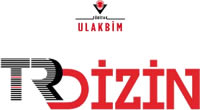Lise Öğrencilerinin Öğrenci Kavramına Yükledikleri Metaforik Algının Çeşitli Değişkenlere Göre İncelenmesi (Investigation of High School Students’ Metaphoric Perception to Student Concept According to Various Variables)
DOI:
https://doi.org/10.15659/ankad.v4i1.77Anahtar Kelimeler:
Öğrenci- Metafor- Algı- Sosyo Ekonomik Düzey- Metaforik AlgıÖzet
Bu araştırmanın amacı lise öğrencilerinin öğrenci kavramına yükledikleri metaforik anlamın çeşitli değişkenlere göre incelenmesidir. Bu amaçla 2015 yılında Düzce ilinde devlete ait okullarda eğitimlerine devam eden 378 lise öğrencisiyle çalışılmıştır. Araştırma ilişkisel tarama modelinde gerçekleştirilmiştir. “Öğrenci Kavramı Metaforik Algı Ölçeği” ve“Sosyo-ekonomik Düzey Belirleme Ölçeği” araştırmada kullanılan veri toplama araçlarıdır. Araştırmada bağımsız gruplar t-testi (independent samples t-testi) ve tek yönlü varyans analizinden (one way ANOVA) yararlanılmıştır. Elde edilen bulgulara göre meslek liselerinde okuyan öğrencilerin öğrenci kavramına ilişkin daha olumlu bir algıya sahip olduğu, öğrencilerin sosyo-ekonomik düzeyleri arttıkça öğrenci kavramına ilişkin olumsuz algılarının arttığı ve yerleşim yerine göre öğrencilerin algılarının farklılaştığı sonucuna erişilmiştir. Yerleşim yerinin önemli etkenlerden biri olduğu düşünüldüğünde bu alanla ilgili yapılacak çalışmalarda okulun bulunduğu çevrenin değer yapısı araştırmacılar tarafından göz önünde bulundurulmalıdır.
Referanslar
Afacan, Ö., Karakuş, M. ve Uşak, M. (2013). Öğretmenlerin bilgi düzeylerine ilişkin öğrenci algıları ölçeğinin Türkçe’ye uyarlanması ve bazı değişkenler açısından incelenmesi. Eğitim Bilimleri Araştırmaları Dergisi, 3 (1), 185-200.
Aydın, İ. H. (2006). Bir felsefi metafor olarak “yolda olmak”. Dinbilimleri Akademik Araştırma Dergisi, 4 (3), 9-22.
Aydın F. (2010). Ortaöğretim öğrencilerinin coğrafya kavramına ilişkin sahip oldukları metaforlar. Kuram ve Uygulamada Eğitim Bilimleri, 10(3), 1313-1322.
Bacanlı, H. (1997). Sosyal ilişkilerde benlik: kendini ayarlamanın psikolojisi. İstanbul: Milli Eğitim Bakanlığı Yayınları.
Büyüköztürk, Ş., Çakmak, E. K., Akgün, Ö. E., Karadeniz, Ş. ve Demirel, F. (2010). Bilimsel araştırma yöntemleri. Ankara: Pegem Akademi.
Clarken, R. H. (1997). Five metaphors for educators, Annual Meeting of the American Educational Research Association, 24-28 March, Chicago.
Cortazzi, M. & Jin, L. (1999). Bridges to learning metaphors of teaching, learning and language. In L. Cameron and G Low (Eds.), Researching and applying metaphor (p. 149- 160). United Kingdom: Cambridge University Press.
Cerit, Y. (2008). Öğrenci, öğretmen ve yöneticilerin müdür kavramı ile ilgili metaforlara ilişkin görüşleri. Eğitim ve Bilim, 33 (147), 3-13.
Çetin T., Kılcan B., Güneş C. & Çepni O. (2015). Examining Secondary School Students Perceptions of the Concept of Migration A Qualitative Study. International Journal of Education, 7(3), 97-120.
Çelikten, M. (2006). Kültür ve öğretmen metaforları. Erciyes Üniversitesi Sosyal Bilimler Enstitüsü Dergisi, 21, 269–283.
Dent-Read, C.H. & Szokolszky, A. (1993). Where do metaphors come from? Metaphor and Symbolic Activity, 8 (3), 227-242. DOI: 10.1207/s15327868ms0803_8
Karasar, N. (2010). Bilimsel araştırma yöntemi- Kavramlar- ilkeler- teknikler. Ankara: Nobel Yayıncılık.
Kılcan B., Çepni O. (2015). A Qualitative examination of the perceptions of the eight grade students regarding the concept of environmental pollution. Journal of International Environmental Application Science, 10(2), 239-250.
Kılıç, F. D. (2010). İlköğretim beşinci sınıf öğrencilerinin sosyal bilgiler dersinde tarih konuları üzerinde oluşturdukları metaforların söylem analizi tekniği ile incelenmesi. (Yayınlanmamış yüksek lisans tezi), Çanakkale Onsekiz Mart Üniversitesi, Çanakkale.
Kılıçbay, M. A. (2012). Gergin bekleyiş mutlu sona erdi: Çocuğumuz üniversiteyi kazandı… Bilgin V. (Ed.), Üniversite bilim ve Türkiye (s. 51-73). Ankara: Binbir Yayınevi
Lakoff, G. & Johnson, M. (2010). Metaforlar, hayat, anlam ve dil. İstanbul: Paradigma Yayıncılık.
Morgan, G. (1980). Paradigms, metaphors, and puzzle solving in organizational analysis.
Administrative Science Quarterly, 25, 606-622.
Morgan, G. (2006). Images of Organization. Thousand Oaks. CA: Sage Publications Özdemir, M. (2012). Lise öğrencilerinin metaforik okul algılarının çeşitli değişkenler bakımından incelenmesi. Eğitim ve Bilim, 37, 96-109.
Saban, A. (2004). Giriş düzeyindeki sınıf öğretmeni adaylarının “öğretmen” kavramına ilişkin ileri sürdükleri metaforlar. Türk Eğitim Bilimleri Dergisi, 2 (2), 131-155.
Saban, A. (2009), Öğretmen adaylarının öğrenci kavramına ilişkin sahip oldukları zihinsel imgeler. Türk Eğitim Bilimleri Dergisi, 7 (2), 281-326.
Strenski, E. (1989). Disciplines and communities, armies and monasteries and the teaching of composition, Rhetoric Review, 8 (1), 137-146.
Şişman, M. (2007). Örgütler ve kültürler. Ankara: Pegem A Yayıncılık.
Tabachnick, B. G. & Fidell, L. S. (2007). Using multivariate statistics. Boston MA: Allyn & Bacon.
Yılmaz, E. (2014). Okul binaları ve örgüt kültürü. (Yayınlanmamış doktora tezi), Dokuz Eylül Üniversitesi, İzmir.
Yıldırım, A. ve Şimşek, H. (2008). Sosyal bilimlerde nitel araştırma yöntemleri. Ankara: Seçkin Yayıncılık.
Yayınlanmış
Nasıl Atıf Yapılır
Sayı
Bölüm
Lisans
Telif Hakkı (c) 2023 Anadolu Kültürel Araştırmalar Dergisi (ANKAD)

Bu çalışma Creative Commons Attribution-NonCommercial 4.0 International License ile lisanslanmıştır.













